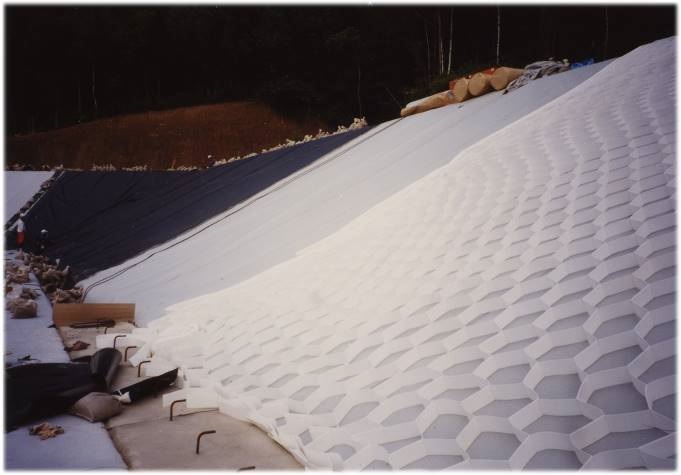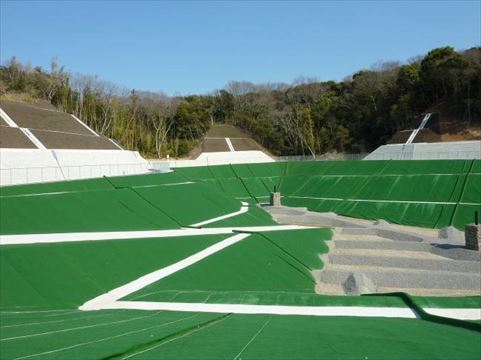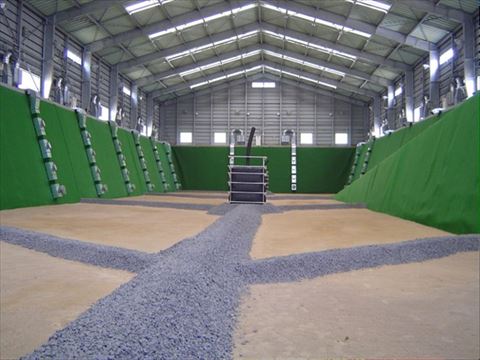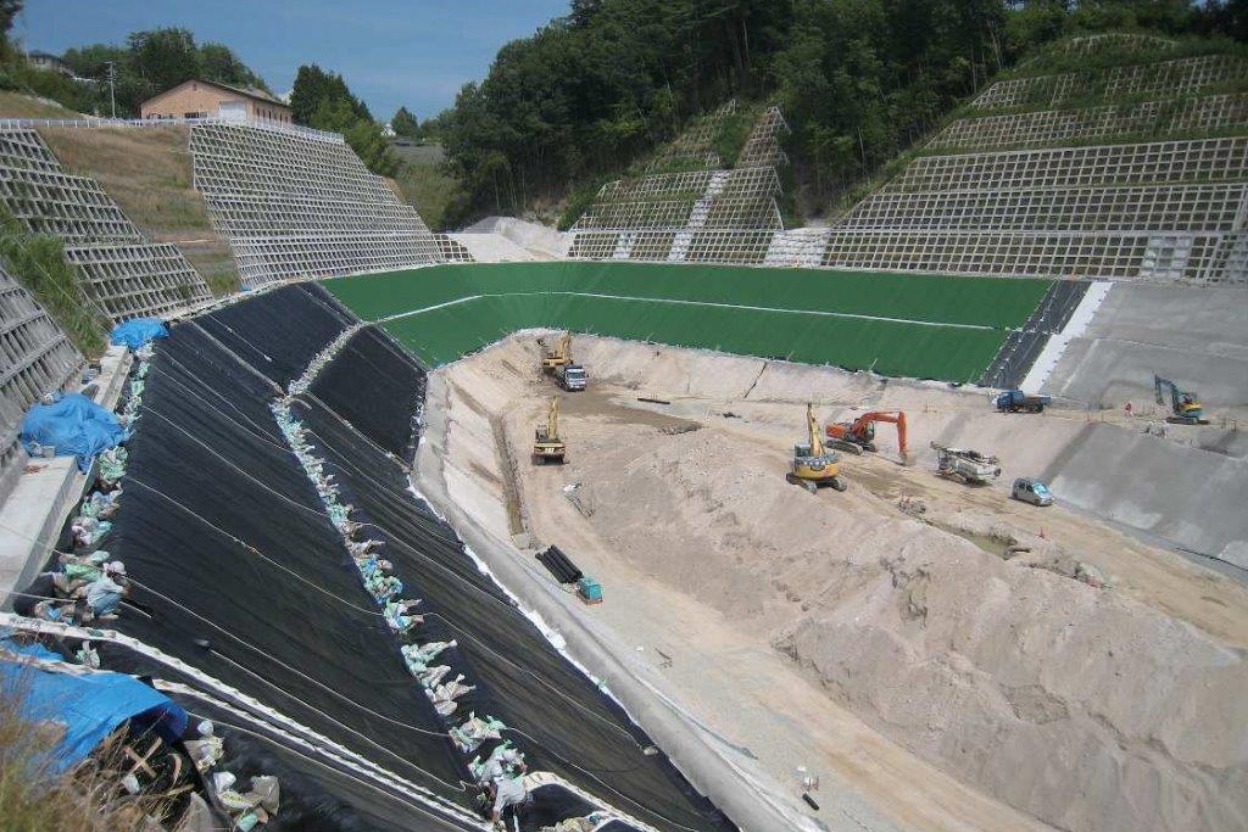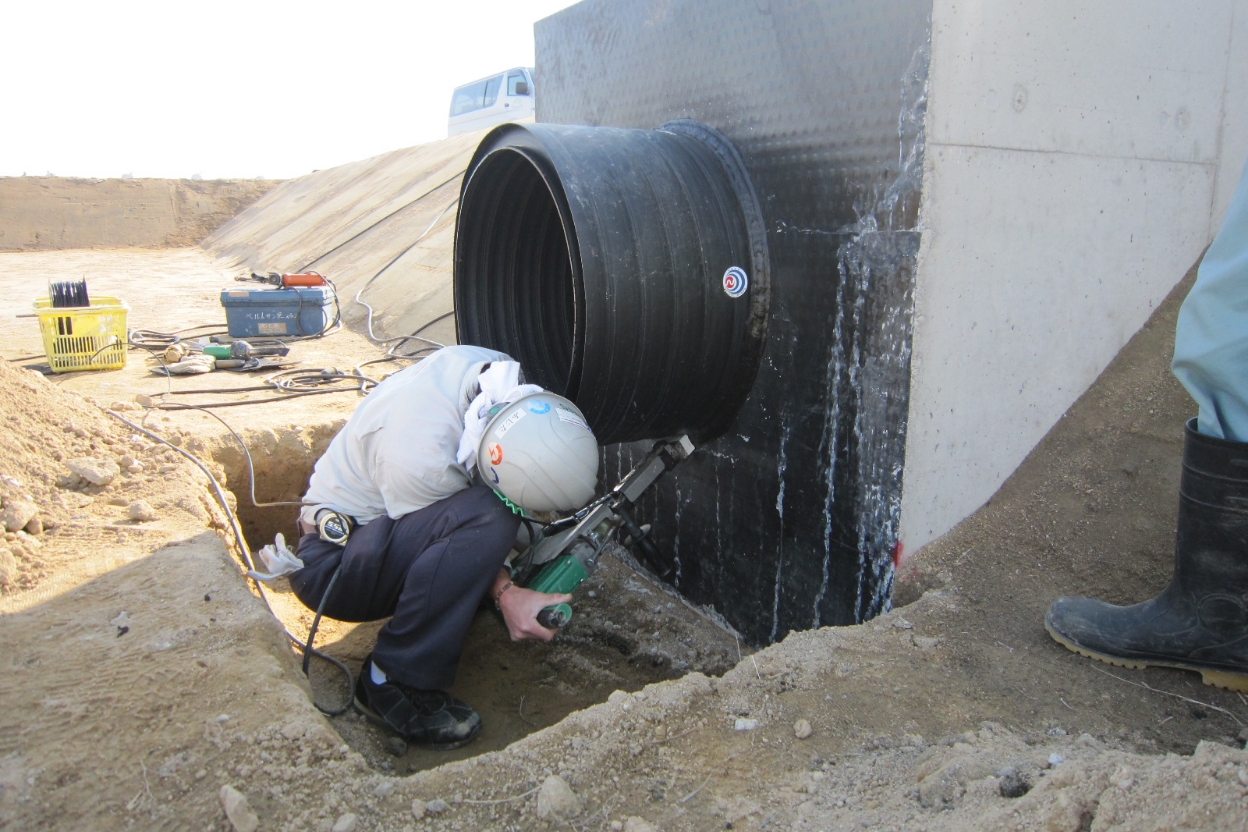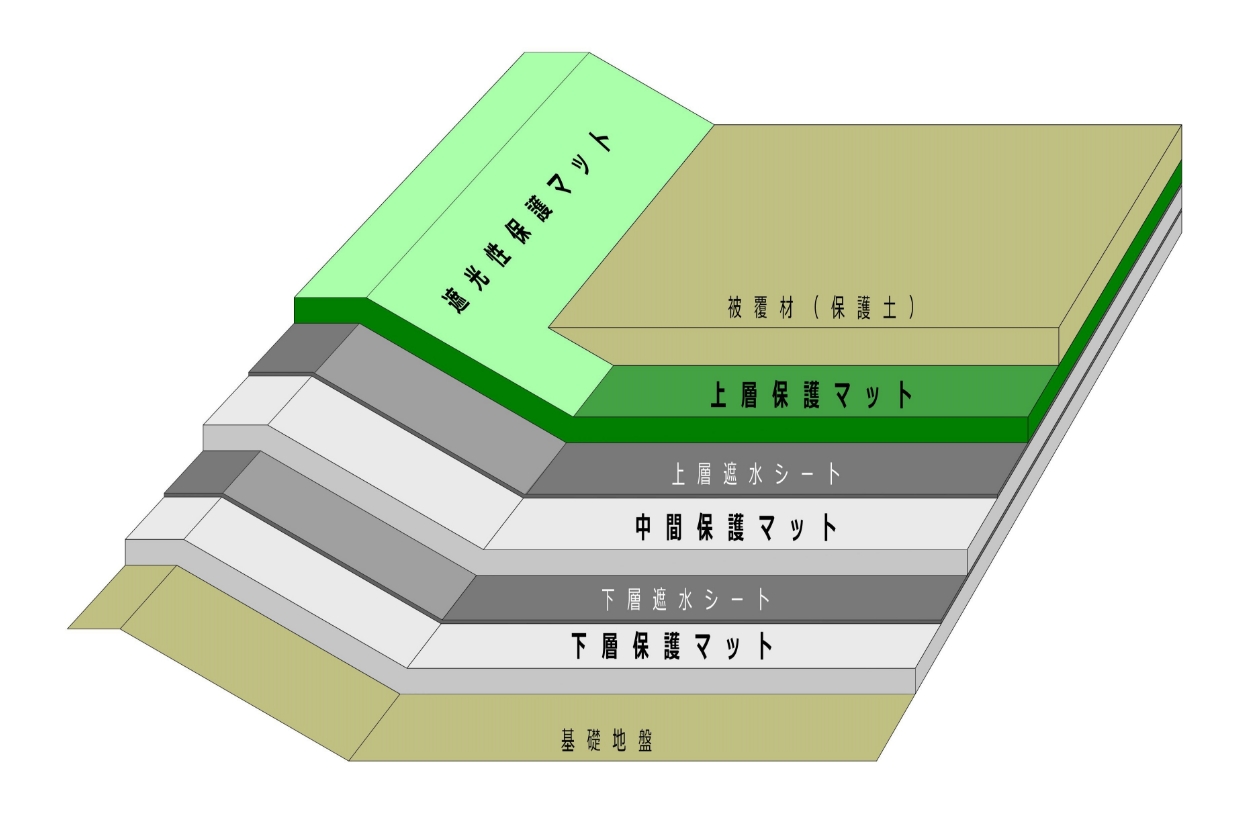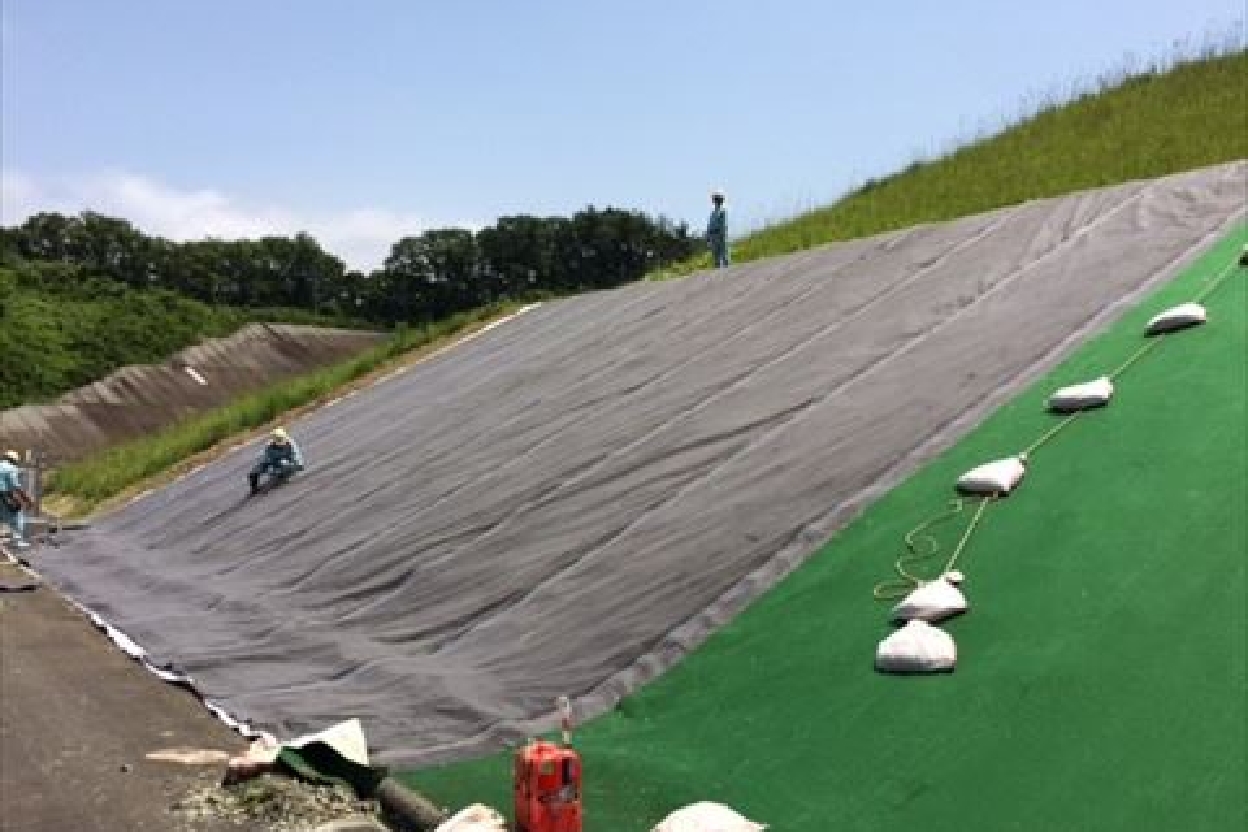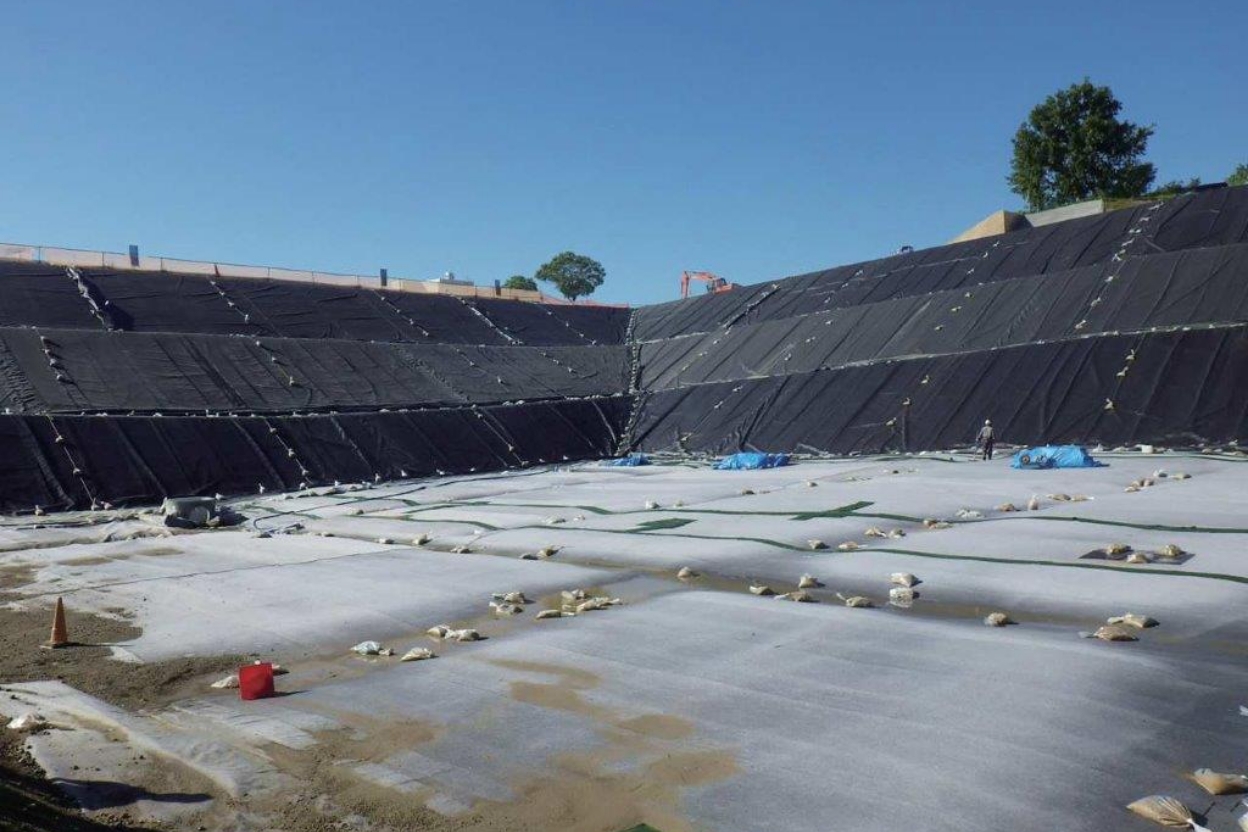
”TPE Sheet” "FRA Sheet"
-Themoplastic rubber sheet-
Rubber sheet blended with resin to provide thermoplasticity
By blending vulcanized rubber with a resin such as polyethylene, this product combines rubber elasticity and thermal bonding properties. There are two types of FPA sheets: TPO-PP sheets using polypropylene and TPO-PE sheets using polyethylene. It is classified as a medium elasticity type by the Japan Lining Systems and Technologies Association.
Related Achievements
Product & Service
Product Lineup
Gundle Sheet FPA
This sheet is a blend of polypropylene and vulcanized rubber. The flexibility component is micro-dispersed during the polymerization stage, resulting in homogeneous and stable performance. Compared to general synthetic resin impervious sheets, it shows less dimensional change with temperature change, and is less susceptible to temperature change during installation, summer, and winter.
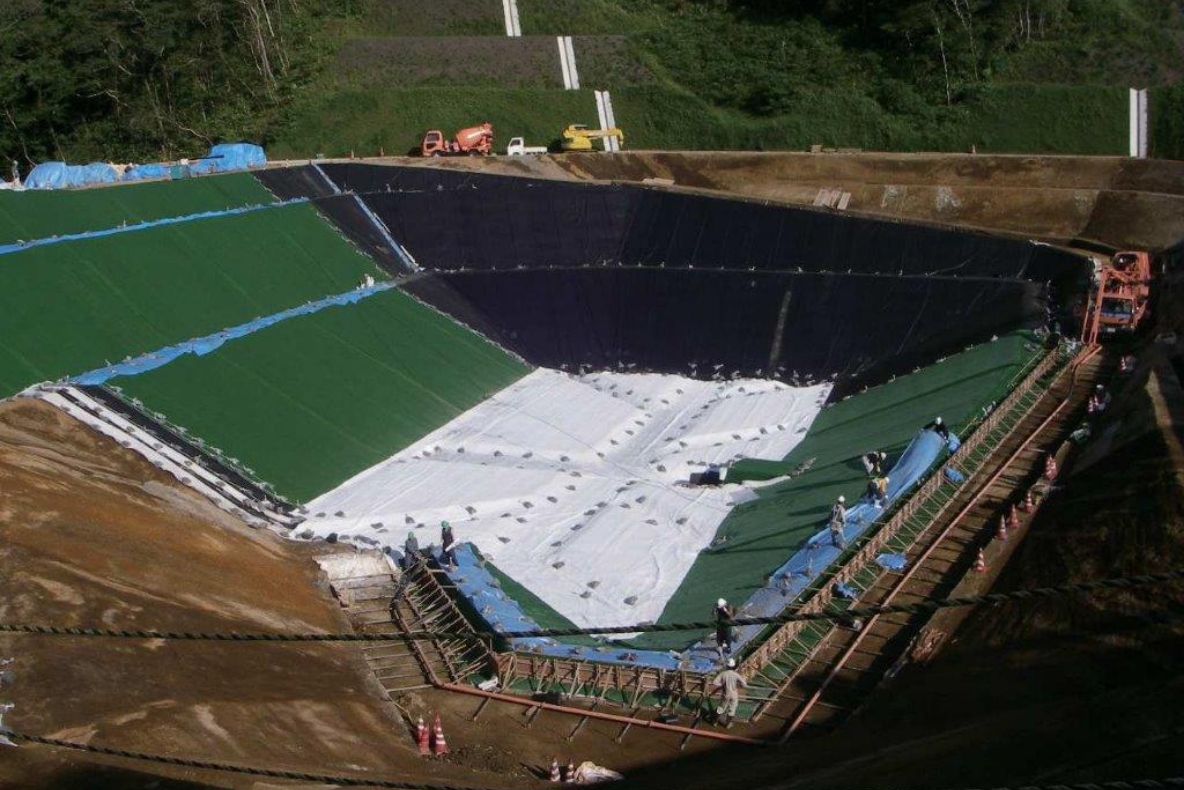
TPE Sheet (PE-based)
Thermoplastic rubber sheets are mainly made from thermoplastic rubber obtained by copolymerizing α-olefins (which do not have unstable double bonds in their molecular structure). It is also called “thermoplastic rubber sheet” because it is not easily affected by flooding water or microorganisms.
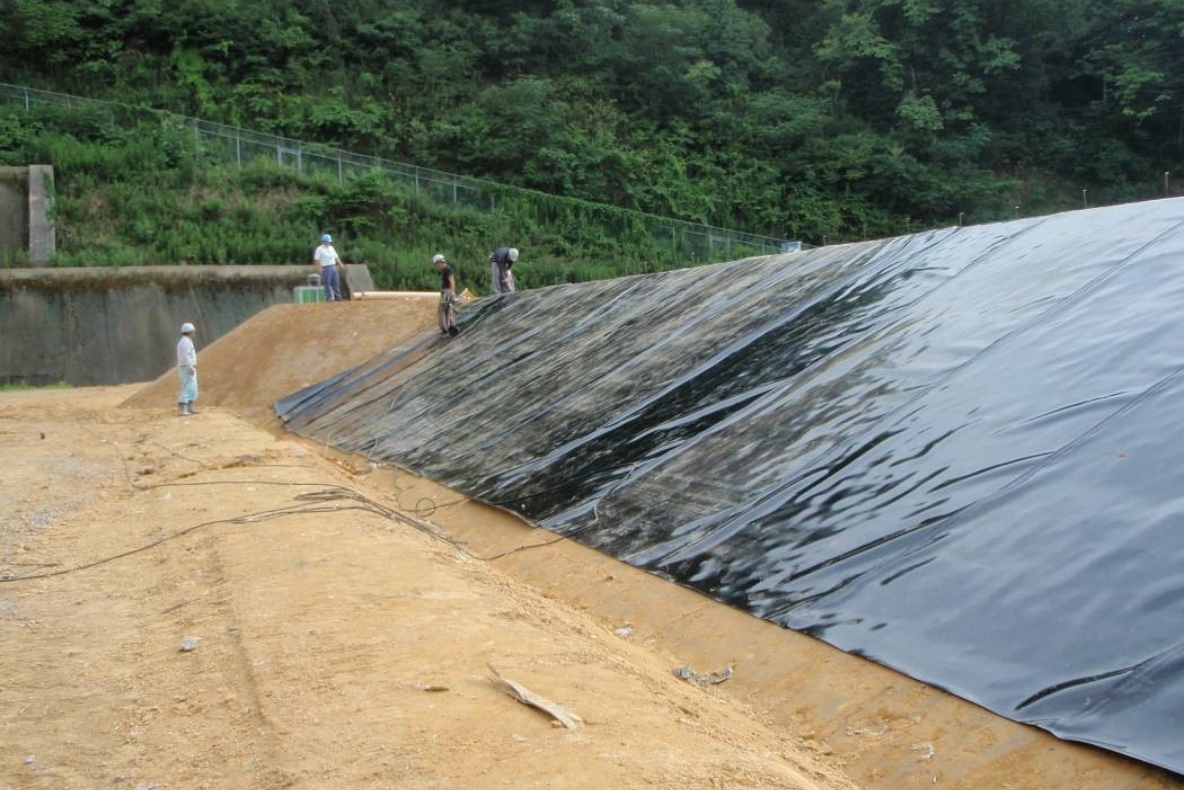
Method of joining impervious sheets
Self-propelled welding situation
Self-propelled fusion bonding machines are mainly used to fuse impervious sheets. Pressure is applied while the sheets are heated by a hot plate or hot air to unify overlapping sheets.
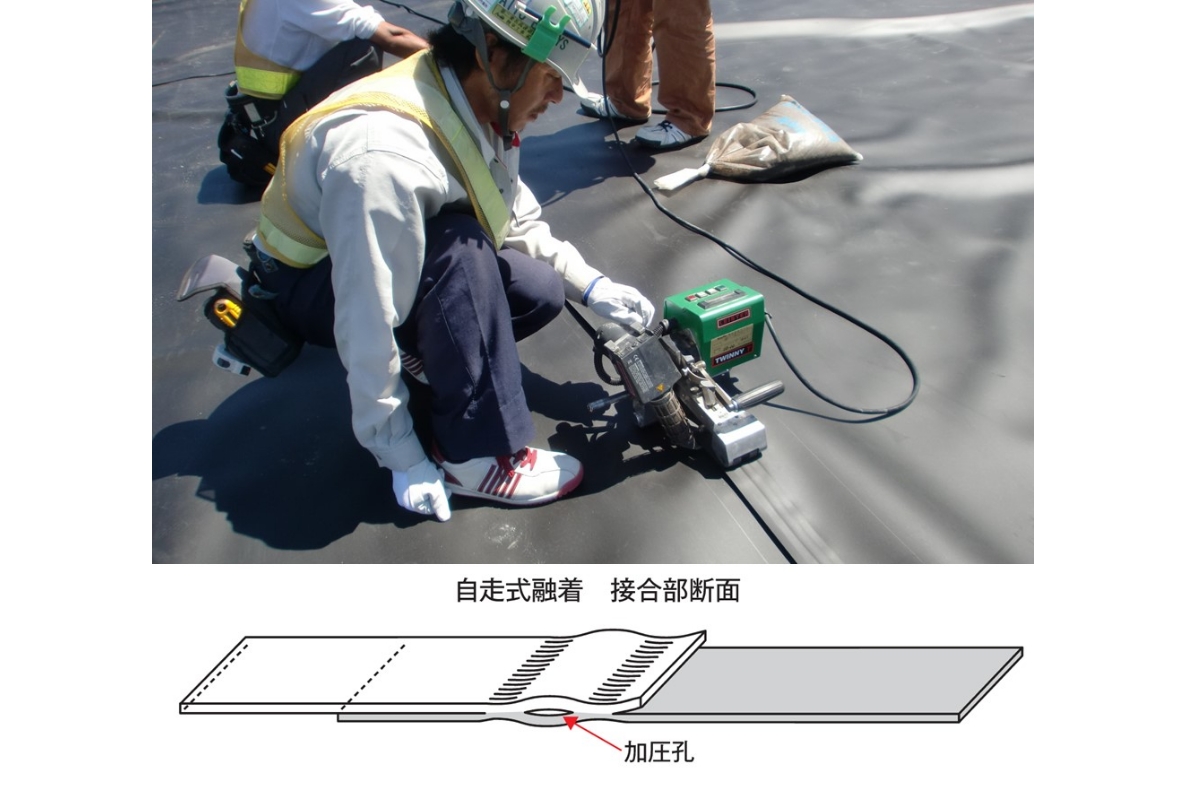
Pressure test status
The watertightness of the joint is inspected by applying pressure to a predetermined value through the inspection hole in the center of two rows of joints (double seam method) and measuring the amount of pressure reduction.
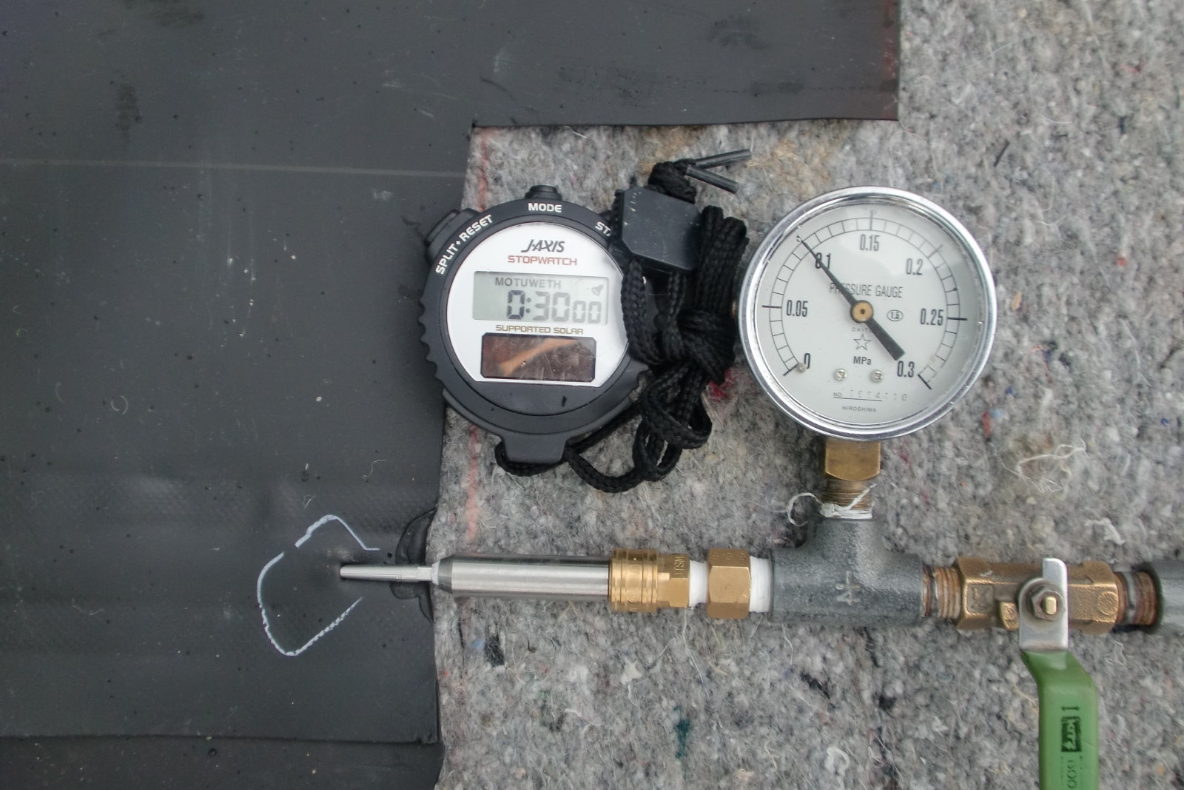
Extrusion welding status
Extrusion welding is used for joints that are difficult to install with a self-propelled fusion splicer. Using a dedicated welding machine, cuttings of the same material as the impervious sheet are melted and integrated with the sheet.
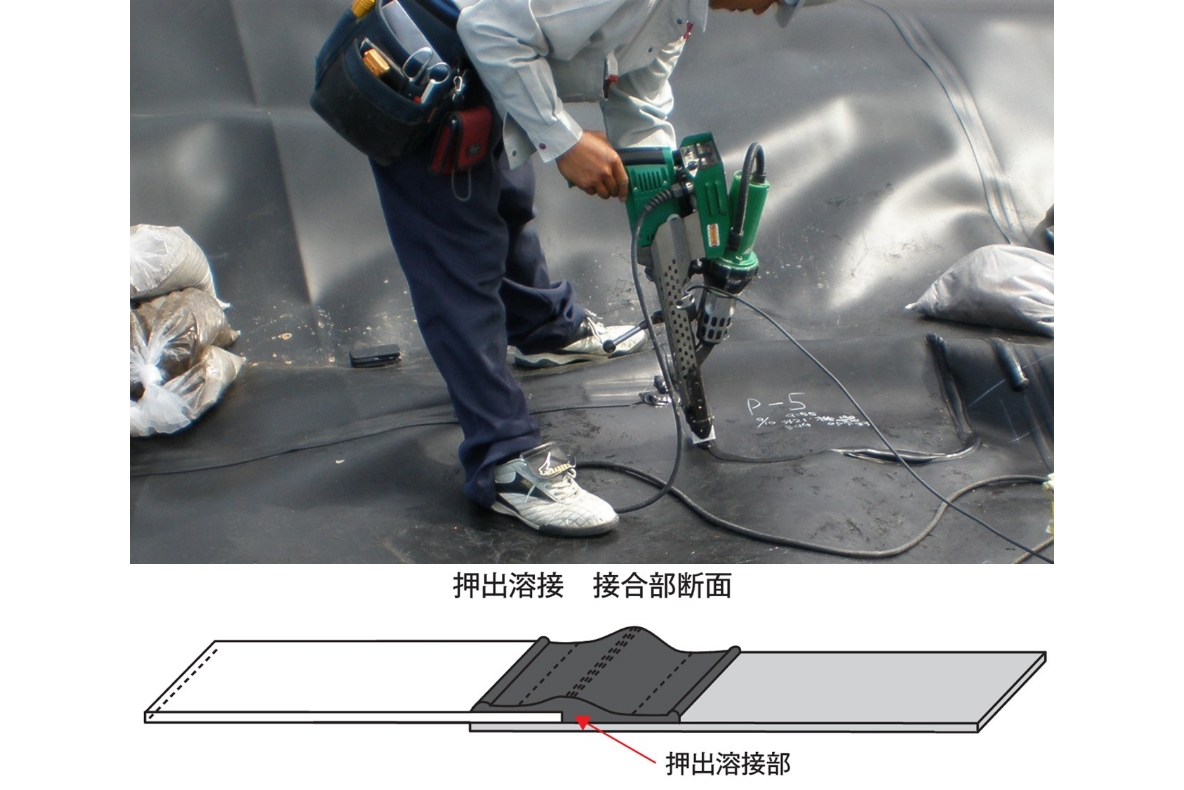
standard value
| item | Low elasticity type | Medium elastic type | High elasticity type | Test procedure | |
|---|---|---|---|---|---|
| Thickness (mm) | 1.5 | 1.5 | 1.5 | JIS K 6250 compliant | |
| Tensile performance | Tensile strength (N/cm or more) | 120 | 140 | 350 | JIS K 6251 compliant |
| Growth rate (% or more) | 280 | 400 | 560 | ||
| Tear performance | Tearing strength (N min.) | 40 | 70 | 140 | JIS K 6252 compliant |
| Joint Strength Performance | Tear performance | 60 | 80 | 160 | JIS K 6008 compliant |
use
- Landfill
- Closed final disposal site
- Contaminated soil containment
- Capping






